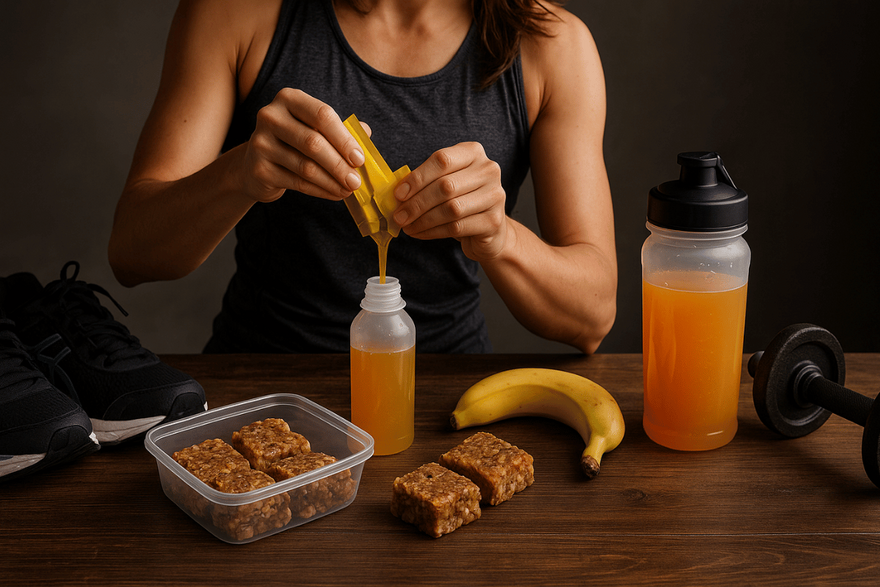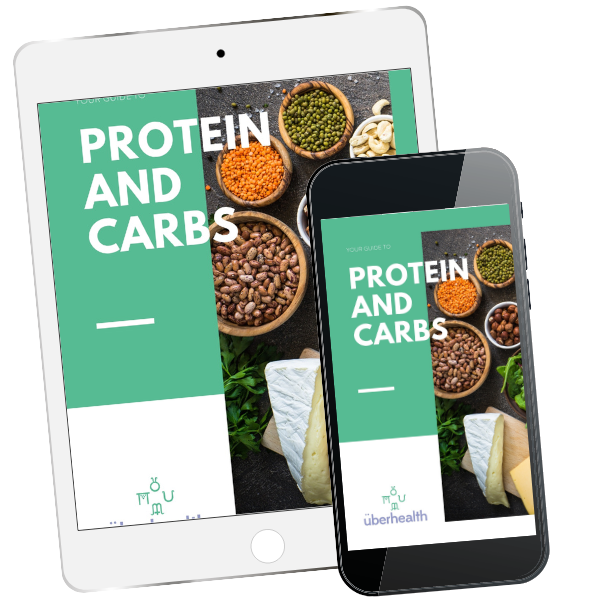Sports Nutrition for Fat Loss and Performance: How to Balance Energy Needs Without Compromising Training

For many active people — whether recreational runners, triathletes, or competitive athletes — fat loss and performance goals often collide. You want to get leaner for health or sport, but you also want to maintain (or improve) training output, endurance, and strength.
The problem? Cutting calories without a strategy can backfire.
Cutting calories can lead to fatigue, plateaued results, and in some cases, low energy availability (LEA) and Relative Energy Deficiency in Sport (RED-S).
However, with the right sports nutrition approach, you can pursue body composition changes while still supporting training, recovery, and long-term health.
Why “Eating Less, Training More” Doesn’t Always Work
Many athletes assume weight loss equals better performance. While a lighter frame can improve speed and endurance in some sports, fuel restriction too severe or poorly timed can:
- Reduce training quality and adaptation
- Increase risk of injury and illness
- Impair hormonal health (especially in females)
- Lead to chronic fatigue and performance plateaus
Fat loss should never come at the cost of your engine — your metabolic health, hormonal balance, and muscle function.
Understanding Energy Balance for Athletes
Energy balance = energy in (food) – energy out (exercise + daily life)
For fat loss, you need a modest energy deficit. But for athletes, the challenge is keeping this deficit small and strategic. Enough to lose fat gradually, but not so much that you compromise training or health.
Enter Low Energy Availability (LEA)
Low Energy Availability (LEA) occurs when there’s not enough energy left for basic body functions after covering training demands. This leads to:
- Hormonal disruptions (missed periods, low testosterone)
- Poor recovery and sleep
- Frequent illness or injury
- Mood swings and irritability
- Long-term health issues like bone loss (osteoporosis risk)
When LEA becomes chronic, it progresses to RED-S (Relative Energy Deficiency in Sport), a clinical syndrome impacting multiple body systems.
Balancing Fat Loss and Performance: Key Strategies
1. Prioritise Training Fuel Timing
Fuel around your workouts (pre, during, post) to support performance and recovery, then create your deficit from meals further from training (e.g., snacks or evening meal adjustments).
2. Aim for Small, Sustainable Deficits
- 250–500 kcal/day deficit is plenty for gradual fat loss
- Avoid aggressive “crash diets” as they lead to muscle loss and training burnout
3. Keep Protein High
- 1.6–2.2g/kg body weight/day supports muscle preservation during energy restriction
- Spread protein across meals for satiety and recovery
4. Don’t Fear Carbs, Periodise Them
- Use carb periodisation: higher carbs on heavy training days, lower on rest days
- Prioritise carbs pre- and post-workout for energy and glycogen replenishment
5. Include Healthy Fats
- Essential for hormones and satiety (avocado, nuts, oily fish)
- Don’t cut fats too low, even in a deficit
6. Monitor Recovery and Energy
- Signs of underfueling: poor sleep, irritability, persistent soreness, stalled performance
- Practitioners: track menstrual cycle (women) and libido/testosterone (men) as red flags
Periodising Fuel for Fat Loss
Periodisation isn’t just for training; it applies to nutrition too. Align energy intake with training phases and goals:
- Base Training: Slight deficit; focus on nutrient density and building endurance
- Build/Intensity Phases: Fuel adequately; prioritise recovery and performance over fat loss
- Taper/Race Season: Fat loss is not the goal; maintain weight and optimise energy availability
This approach avoids underfueling during key training blocks and prevents LEA.
For Practitioners: Screening and Support
- Screen for LEA: Use tools like LEAF-Q or RED-S CAT to identify at-risk athletes.
- Lab tests: Ferritin, vitamin D, thyroid, sex hormones, cortisol.
- Education: Help athletes understand why fuel timing and adequacy matter because performance improves with proper fueling.
- Individualisation: Energy needs vary, so avoid one-size-fits-all calorie recommendations.
Practical Takeaways
- Fuel training first; create deficits away from key sessions.
- Small, consistent energy reductions > drastic cuts.
- Monitor health markers: mood, sleep, recovery, menstrual cycles, injuries.
- Work with a sports nutritionist if unsure, and especially during heavy training or competitive seasons.
Fueling for Training and Weight Goals
Fat loss and performance can coexist, but only if approached with care. Restriction without strategy increases injury risk, hormonal disruption, and burnout.
By periodising nutrition, prioritising fuel timing, and respecting recovery, athletes can achieve body composition goals without sacrificing the strength and endurance they’ve worked so hard to build.
These principles are explored in depth in my Uberhealthy Weight Loss trainings:
- Uberhealthy Weight Loss Strategies – foundational strategies for weight loss and health
- Uberhealthy Weight Loss 2 – advanced approaches to hormones, metabolism, and long-term success
Both trainings are science-based, practical, and designed for active people and practitioners who want sustainable results without compromising their training or health.
FREE RESOURCE


